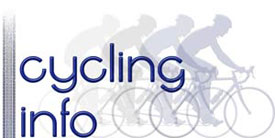The relative safety of cycling is a crucial factor in determining how much people cycle.
Factors That Influence Bike Safety
Safety in Numbers The first factor is the number of cyclists in the city. Areas with a higher density of cyclists have a lower accident rate per KM. This is why countries with high rates of cycling, typically have lower accident per KM rates. Cycle fatalities per country. There is also a virtuous circle. If the roads are deemed safe, then it will encourage more people to cycle. See: Safety in Numbers
Time of Day. The most dangerous times for cycling tend to be around twilight (early morning and late evening). A report suggested in Florida 60% of bike fatalities occur at twilight despite only 3% of all journeys. See: Cycling at Night
Roads Used / Average Speed. In the UK, the roads with the highest fatality rates are mainly rural A roads. These are fast twisty roads with speed limits of 50mph. At higher speeds, accidents are more likely to be fatal. At 20mph only 5% of impacts with car prove fatal. At 30mph this rises to 45%. At 40mph this rises to 85%.
[Source 1: Killing Speed and Saving Lives, UK Dept. of Transportation, London, England. See also Limpert, Rudolph. Motor Vehicle Accident Reconstruction and Cause Analysis. Fourth Edition. Charlottesville, VA. The Michie Company, 1994, p. 663.]
Visibility. One of the commonest causes of cycle accidents is when motorists fail to see cyclists. This failure to see cyclists can be due to:
- no lights / dark clothes
- cyclists in drivers blind spots (especially when lorries turning left)
Method of Cycling
How people cycle also plays a key role. Accidents are often due to lack of attention and care. For example cycling on the pavement is a relatively more dangerous than on the road. This is because motorists are less likely to see a cyclist on pavement come around corner.
Lorries Turning Left
A big percentage of cycle fatalities is caused by collisions with heavy goods lorries. Often when lorry is turning left. There is a large blind spot where cyclists can’t be seen.
There is a need to educate both cyclists and heavy goods vehicle drivers. But cyclists can avoid undertaking on inside. See also: Buses and cyclists and women at risk from left turning lorries
What Can Cyclists Do to Improve Cycle Safety?
- Cycle with Common Sense.
- Cycle in visible positions. Avoid hugging gutter. This makes you more visible for cars turning right. If you avoid hugging the gutter and cycle at a distance from parked cars, there is also less chance of cars opening doors into your path. It can be difficult cycling in middle of lane because cars may get impatient behind. But, sometimes it is necessary to take whole lane and make cars wait a little.
- Never undertake a big vehicle when there is a chance they could start moving and turn left into your path.
- Don’t take risks in passing through junctions.
- Be visible. Wear lights and high viz clothing where necessary, especially at twilight.
- Wear Helmet. Although there is much debate about effectiveness of helmet. Helmets will offer protection and reduce injury for head collisions.
- Choose quieter roads / cycle paths.
- Take care at junctions where there is higher incidence of accidents.
- Don’t assume motorists will see you. Slow down and wait for eye contact.
- Don’t trust signals. Often motorists will be signalling left. The temptation is to turn right assuming the cars won’t go straight on. But, when the car signals left, it doesn’t necessarily mean they are going to turn left into your road.
- Make a noise. Cars have horns to warn other road users. Cyclists have bells and their voice. Sometimes, you can’t beat a quick yell to bring pedestrians / motorists out of their slumber.
- Cycle Further Out in Road for Greater Visibility A common cause of accident is a motorist pulling out turning right and failing to see the cyclist. This can be limited by riding in a visible position. Using headlamp in dark conditions and anticipate possibility of cars not seeing you.
Overall
This is not meant to discourage cycling by raising potential dangers of cycling. The truth is cycling is good for you. The health benefits outweigh the dangers from vehicle collisions. See: How dangerous is cycling? Don’t see this as a reason to avoid cycling and sit on your sofa eating chips. Just see it as a potential for making cycling even safer.
- Cycling safety at Direct Gov
- Cycle safety at Tfl



Thanks Botogol. For some reason a little insomnia inspired me to write this at 3am this morning.
“There is a large blind spot where cyclists can’t be killed”
now that would be a GOOD place to be!
but i rather supsect you meant a
“There is a large blind spot where cyclists can’t be seen”